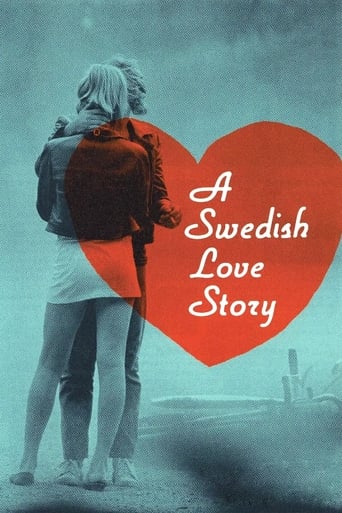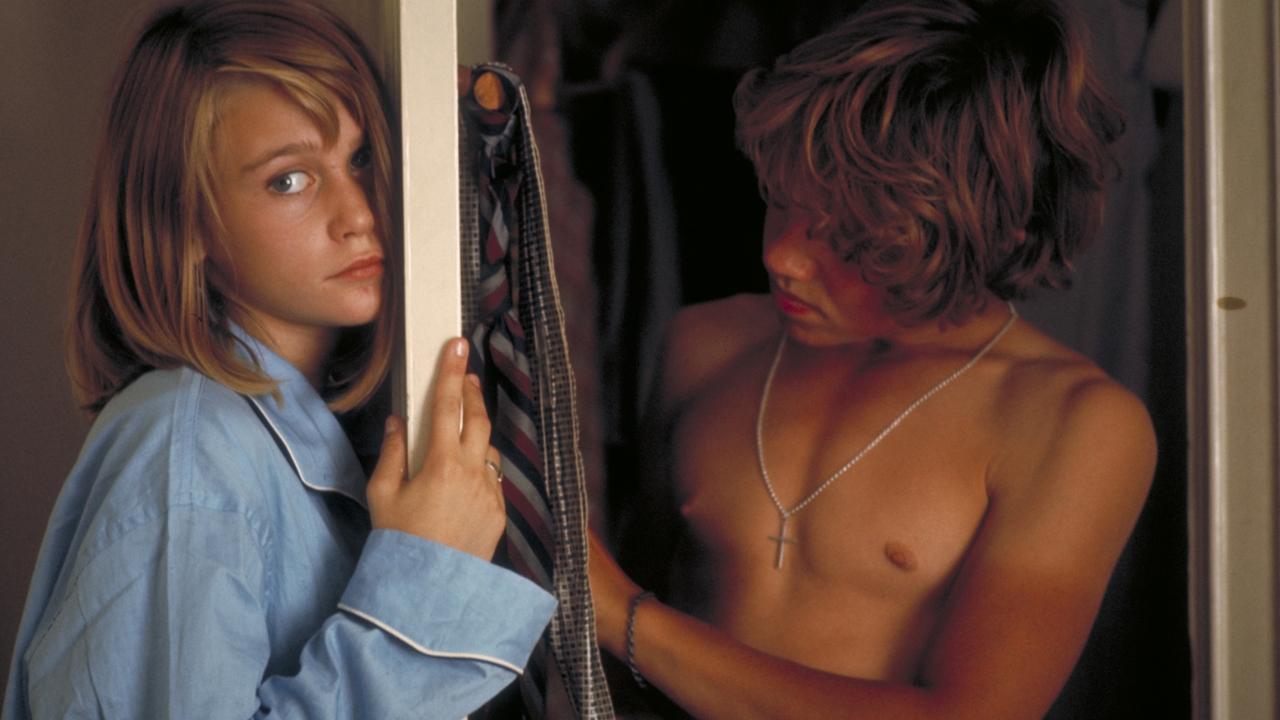Maurizio73
Two teenagers, Par and Annika, meet by chance during a visit to their relatives guests to a nursing home. Born among them a tender feeling growing in the background of a thin family distress and social impact, including regrets and recriminations of older people and betrayed the expectations of the most 'young people, along the dividing line of a generational crisis that is a mirror and reflection of a country that seems to have lost their national identity. In cold and distant reverberations of a remote Swedish Summer, director Roy Andersson seems to chase the chimera of a 'New Cinema' which (belatedly) aims to public attention through a Scandinavian vigilant attention to the events of the younger generation (teenagers who imitate American riders between leather jackets and juke box), not failing, however, to return the existential sense of a profound inability to communicate like a worm that eats away hopelessly family relationships and decreasing the aesthetics of the new impulses that had troubled European cinema in the previous years in the context mature and aware of non-trivial analysis of social relations and of an irreversible crisis of values, as happened in those years with the extraordinary exploits of Michelangelo Antonioni. Andersson attempts to capture the chorus of this social dimension through the use of medium shots that collect the plurality of appearances that fill the screen as an overview on the evolution of human relationships, often dropping the camera eye on the detail of the first plans from which we grasp the sense of a shared personal pain that makes collective grief (the grandfather crying at the beginning of the film claiming the imprisonment aware of the existence of a terminal condition, the young Eva who confesses his granddaughter premature failure of a personally and professionally project , the hysterical laughter of John shows that the sense of a contemptuous unbearable frustration individual). Against the background of this social and cultural discomfort you shake the manifesto of this new cinema, overlap the 'wave' of this generational aesthetic where you insert the delicate dialectic of a theory of looks that weave the plot of a visual approach, the bitter lust a sweet discovery sentimental, the return in motorbike without headlights in a twilight full of hopes. Striking the ending where in the delirium of ethyl salesman refrigerators will raise the desperate cry of a social failure as a prelude to the final tragicomic in the morning fog, a new sad homecoming. Cinema of passage, between the cold nihilism of a generational disenchantment and the silence of a domestic in communicability family, which returns the thickness of a work that collects 5 nominations and 4 awards at the Berlin Film Festival in 1970. The icy glare of Swedish Nouvelle Vogue.
beckettesque
Quite a few years ago, when I fell in love with Roy Andersson, it was mainly in relation to his late aestheticism, his realist-absurdist films Sånger från andra våningen and Du levande, but also his brilliant short films. Now that I finally got round to this early film of his, I can only confirm that I am no longer in love, rather that I definitely love this director.Kärlekshistoria is a cinematic experience very much different than his later work and, at the same time, to a considerable extend related to it. This apparent ambiguity lies in the different realist/absurdist relations. While Sånger/Du levande present very real aspects of life in all their absurdity, in Kärlekshistoria it is content, rather than form that is dominantly absurd(ist). In this particular film, you will not meet a colourful cast of no-name people painfully engaged; entrapped into their miserable lives that do not seem to go anywhere. No old people dragging their dogs in the street, or weird-looking strangers in bars. However, this is not to say that that brand of cinematic opulence is absent from En kärlekshistoria. Quite the contrary, the characters do indeed feel the same things, do the same things, fail at the exact same things. In fact, I would go so far as to imply that both his earlier and his recent films revolve around the same: the dramatic irony that represents the essence of (failed) human condition.The (prominent) love storyline is set in the only context possible: childhood. This storyline is dominant, in terms of screen time as well as in terms of soundtrack; you basically watch two teenage souls fall in love, or something akin to it, if at times too much aided by music. At first the setting did not seem very Anderssonesque, though, almost alien to the image I'd remembered and cherished the director. What is more, I will concede to being slightly annoyed at the whole construction of the film. Naturally, after some time I acknowledged how misled I was.Actually, it was not until the last half an hour of the film that it, at long last, started to dawn upon me, when En kärlekshistoria's subtle and darker implications started unfurling. I felt like a stranger to the world of adults, as opposed/juxtaposed to the world of the young love- birds that I got to know and relate to. Mayhap I was too distracted at that point to fathom it, or to even recognise its presence/omnipotence, but, at any rate, I am quite sure this narrative device is deliberate. The music, I believe, served to push the boy-meets-girl story to the fore, leaving the adults to mind their own business and, consequently, the viewer not to.Bottom line should be the tagline. Moments of truth. It is also worth mentioning that this is one of the few titles whose taglines actually do a pretty darn good job at announcing what it will be about. It is precisely about the moments of truth, about the cracks in one's life, details that at some point overload one, demanding one's full and undivided attention. En kärlekshistoria gives one the dots, but at the end it is one who is left with the job of finding and connecting them into a whole. Once you accomplish that, the magic and the potency of this film is sure to follow.
Uneken
Beautiful film! I saw it on DVD from Lovefilm in Norway. The DVD has directors comments as well. Roy Andersson speaks about how for him the most important aspect of the film is the world of the parents, the difference in social class of both families. This is certainly valid. But what hits you in the stomach, especially if you were young in those days, is the "deja-vu" of the relation between Pär & Annika and the way that developing relation is portrayed here. I thought it was a recently made film at first (had not looked at all at what sort of film it was) and thought: "Wow, where did they get all these authentic 60's cars???" The film has a very melancholic taste to it, for me at least, born in 1954. And Ann-Sofie Kylin would have absolutely been a girl I would have totally fallen in love with. The film is funny too at times, like when Pärs' macho moped gets overtaken by a bicycle rider, eating an ice-cream. Lovely film, just lovely!
Elmer-7
This is a great little film, describing two teenagers first love experience. It really hits the spot, showing Sweden as it was in the 1970s, complete with dull apartments, the very tough moped gang and, of course, the summer party in the country house. Above all, it shows the joy and agony of teenagers being in love. It´s very easy to relate to the attraction that Per and Annika feels for each other and their shy, clumsy efforts to get together. Anyone who has been a teenager, and most of us have, is reminded of those wonderful years. This is how it really was!


 AD
AD





